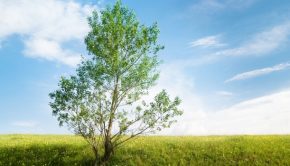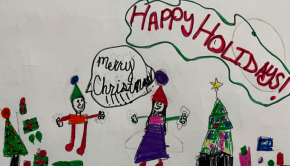EARTH IN PERIL, Children Confront Climate Change
We only have one home. If we mess this one up, where do we go next?~Hippocrates, age 8
This month, Home Box Office (HBO), in collaboration with New York City’s American Museum of Natural History, will air the new documentary, Saving My Tomorrow. Scientists representing the museum discuss how temperature change affects life on Planet Earth, but the majority of voices are those of children. Their words cry out for universal action to prevent them from inheriting what they believe is a dying planet in desperate need of healing.
In the Atmosphere
“We need to know the truth, because adults clearly aren’t doing enough to stop this.”~Zoe, age 12
The National Oceanic and Atmospheric Administration and NASA recently announced that last year was the hottest in 135 years of recordkeeping, with rising ocean temperatures driving the global heat index.
Nine of the 10 hottest years have occurred since 2000. The odds of this taking place randomly are about 650 million to 1, especially without an El Nino influence, according to University of South Carolina statistician John Grego.
“The globe is warmer than it has been in the last 100 years,” says climate scientist Jennifer Francis, Ph.D., of Rutgers University, in New Jersey. “Any wisps of doubt that human activities are at fault are now gone with the wind.”
At Sea
“We do more damage to the planet than we think.”~Peri, age 9
In the same 100 years, sea levels have risen seven inches, mostly due to expansion as the water warms. “We have over 2 million preserved fish in our collection. We study them to see the effect of temperature change,” says Melanie Stiassny, Ph.D., curator of ichthyology at the museum. “The mummichog fish is less than an inch long. It’s a bottom feeder and that’s where pollution like mercury lies. When the water is warm, fish eat more and mercury is stored in their bodies.” The contaminants move up the food chain, bringing the effects of pollution to our dinner table.
A 2006 study by Nicola Beaumont, Ph.D., with the Plymouth Marine Laboratory UK, found that 29 percent of the oceans’ edible fish and seafood species have declined by 90 percent in the past 100 years. The international team of ecologists and economists led by Boris Worm, Ph.D., of Dalhousie University, in Halifax, Nova Scotia, predict total saltwater fish extinction by 2048 due to overfishing, pollution, habitat loss and climate change. Rising ocean acidity due to absorption of increasing carbon dioxide and other emissions from burning fossil fuels impacts creatures large and small, like dissolving the shell of the tiny sea butterfly, a vital link in the ocean’s food chain.
Americans currently consume 4.5 billion pounds of seafood each year.
On Land
“Each species was put here for a reason. We are the caretakers.” ~a youth at a climate rally
Scientists look back to look ahead. Henry David Thoreau fell in love with the wilderness around Concord, Massachusetts, 160 years ago. From his renowned journals, scientists know when flowers like the pink lady slipper (Cypripedium acaule), bird’s-foot violets (Viola pedata) or golden ragworts (Packera aurea) used to bloom. Today, with temperatures six degrees Fahrenheit warmer than in Thoreau’s time, these species now bloom two weeks earlier. The Canada lily (Lilium canadense), plentiful before, is now rare, unable to adapt to the new reality.
Paul Sweet, collections manager of the museum’s ornithology department, studies “skins” (stuffed birds). He says, “The skins show us how birds lived years ago.” In just the past 100 years, bird species that have gone extinct range from the ivory-billed woodpecker (Campephilus principalis) to the once-abundant passenger pigeon (Ectopistes migratorius) and Carolina parakeet (Conuropsis carolinensis).
In Colorado, 70 percent of the lodgepole pines have been lost, with pines in other states also in trouble. Pine beetles feed on the pines. Historically, winter brings death to both the beetles and weakened trees, which fall to feed a renewed forest. Due to warmer temperatures, the beetles are living longer and migrating to higher altitudes to kill more trees. Forest fires follow the dry timber line.
All Are Needed
“I don’t have time to grow up before becoming an activist.”~Ta’Kaiya, age 12
“Get your parents involved.”~Teakahla, age 11
Children are more informed now than ever before. Schools offer classes on ecology, the environment, global warming and climate change. Disasters are instant news, constantly streaming through digital media. Kids are aware that they need adults to work with them to keep Earth habitable.
HBO will air all four parts of Saving My Tomorrow starting Apr. 22. Check local listings—and watch as a family. See Tinyurl.com/SavingMyTomorrow.
Connect with freelance writer Avery Mack at AveryMack@mindspring.com.
Forward Good Change Today
- Reuse more, buy less. Less trash equals less pollution.
- Bike or walk, instead of driving. Don’t use the car at least one day a week. Less use of fossil fuels equals less drilling, fracking and oil spills.
- Substitute a planet-healing activity for the usual after school program. Replace lawns with native plants, which need less water and no mowing. Email manufacturers to urge them to use less packaging and plastic, auto makers to produce more fuel-efficient cars, grocery stores to carry more locally sourced foods and ban plastic bags, and government agencies to improve pollution control measures.
- When eating meat, make sure the animals were humanely and locally raised, not factory farmed.
- For fish, factory farmed is preferred when farmers are vetted by watchdog agencies for being devoid of disease, pollution and heavy metals; clean fish are especially rare among international providers. Learn more at Tinyurl.com/SustainableFishFarming.
- Support wildlife. Help hatchling sea turtles make their way to the sea. Predators and man are the biggest threats—only one in 1,000 hatchlings reach adulthood. Plant milkweed to feed monarch butterflies. Use natural insect repellants like basil or marigolds instead of killer sprays.
- Speak out and speak up. Search c2es.org/science-impacts/basics/kids for event ideas and resources.




























